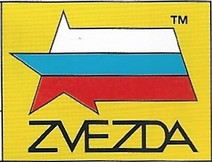L'aereo - B737-8 Max - Myouth - Ricordi degli anni '70
Menu principale:
L'aereo - B737-8 Max
Modellismo > Aerei > Boeing 737-8 Max
Boeing 737-8 Max

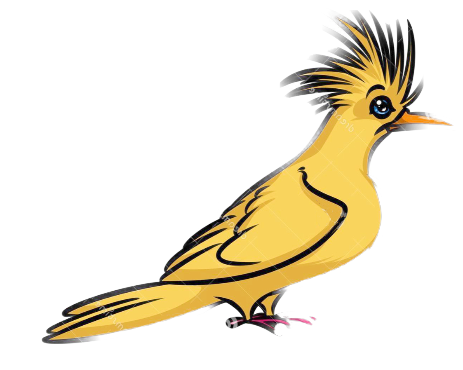
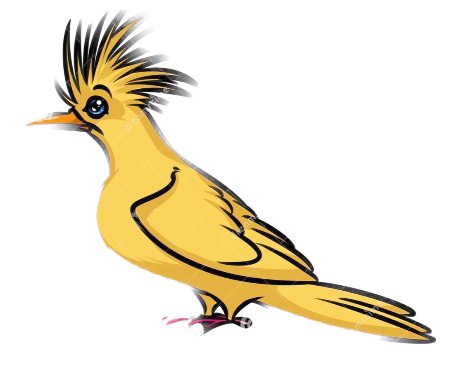
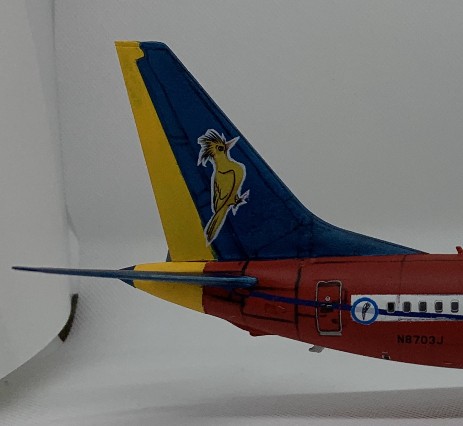
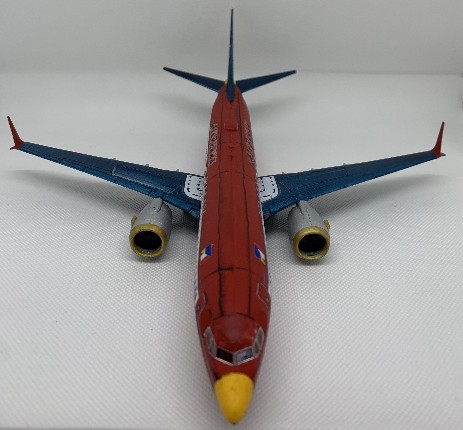

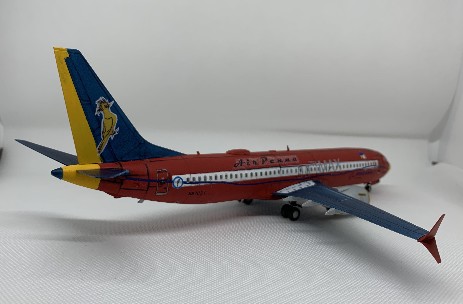
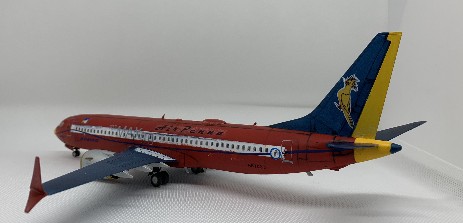
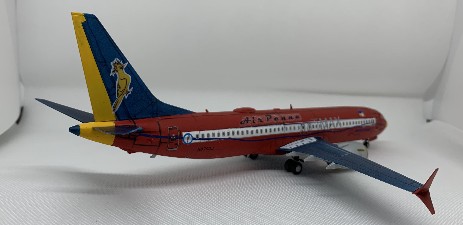

Compagnia di bandiera: Air Penna
Nazionalità: sconosciuta
Bandiera esposta:

Anno: 2019
Boeing 737-8 Max
Il Boeing 737 MAX è una famiglia di aeroplani progettata dalla Boeing. La nuova famiglia è basata sulla precedente Boeing 737 Next Generation, che andrà a sostituire, divenendo così la quarta famiglia di Boeing 737. La prima modifica è l'utilizzo dei più grandi ed efficienti motori CFM International LEAP-1B. Anche l'avionica verrà leggermente modificata. Il primo volo per un 737 MAX (MAX 8, immatricolato N8701Q e chiamato "Spirit of Renton") è stato effettuato il 29 gennaio 2016, quasi 49 anni dopo il primo volo del 737-100, avvenuto il 9 aprile 1967. A dicembre 2018 la Boeing ha firmato ordini per il 737 MAX per un totale di 5.005 unità.
Il 17 dicembre 2019, Boeing annuncia che sospenderà la produzione di tutte la varianti del 737 MAX a partire da gennaio 2020.
Sviluppo
A partire dal 2006 la Boeing ha cominciato a discutere la sostituzione del Boeing 737 con un modello dal design moderno che seguisse il Boeing 787 Dreamliner(chiamato Boeing Y1). La decisione fu tuttavia ritardata al 2011.
Nel 2010 però la Airbus lanciò la Airbus A320neo family, una nuova serie di aerei a fusoliera stretta con nuovi motori per migliorare il consumo di carburante e l'efficienza operativa. Molte compagnie cominciarono ad ordinare il nuovo aereo, in particolare AirAsia e IndiGo, e questo mise sotto pressione la Boeing; il 30 agosto 2011 la compagnia approvò il progetto del 737 MAX. La Boeing ha stimato che il nuovo velivolo porterà a un risparmio di carburante del 16% rispetto all'Airbus A320 e del 4% rispetto all'Airbus A320neo. Il raggio del 737 MAX dovrebbe coincidere/superare quello del concorrente Airbus.
Le varianti della nuova famiglia sono le seguenti: MAX 7, MAX 8 (con la versione MAX 200), MAX 9 e MAX 10, identificate con i codici ICAO rispettivamente B37M, B38M, B39M e B3JM. La Boeing ha comunicato che la lunghezza della fusoliera e la configurazione dei portelloni sarà la stessa della serie precedente.
Design
Come nei recenti standard di produzione, il 737 MAX riceverà il pacchetto Boeing Sky Interior, con cappelliere e illuminazione a LED entrambe basate sugli interni delBoeing 787, così come per le winglet.
Verrà inoltre introdotto un nuovo modello di wingtip sui nuovi 737. Simile a un ibrido fra winglet e wingtip, secondo la Boeing questo modello assicurerà un ulteriore 1,5% di risparmio carburante, più del 12% di risparmio già previsto per il 737 MAX.
Boeing ha anche pianificato di aggiungere ulteriori sistemi fly-by-wire alla famiglia 737 MAX, anche se le aggiunte saranno minime, e ha confermato che saranno aggiunti agli spoiler.
Motori
Boeing ha speso gran parte del 2011 nel valutare due diversi diametri del turbofan CFM International LEAP-1B: 168 cm o 173 cm; entrambi comporterebbero cambiamenti al carrello di atterraggio per mantenere i 43 cm di distanza fra motore e suolo. L'amministratore delegato di Boeing Commercial Airplanes, Jim Albaugh, ha affermato che il motore più grande consuma meno carburante ma produce più resistenza e pesa di più, e occorrerebbero ulteriori, estesi cambiamenti alla cellula dell'aereo.
Entrambi i diametri delle ventole sono un incremento rispetto ai 157 cm del CFM56-7B montato sul Boeing 737 Next Generation.
Nel novembre 2011, la Boeing ha annunciato la scelta del motore dal diametro di 173 cm. A causa della maggior larghezza del motore il carrello di atterraggio è allungato di 15–20 cm per mantenere la distanza motore-suolo. La configurazione definitiva del 737 MAX è stata svelata a fine 2013.
Il 17 maggio 2012, la Boeing ha annunciato un'ulteriore modifica al diametro della ventola, portandolo a 176 cm. Il diametro più grande della ventola sarà compensato con un più piccolo "core" del motore, in precedenza identificato come una criticità al design prima della configurazione finale pianificata per metà del 2013
MCAS
L'adozione di motori di maggior diametro ha comportato (per permettere un'adeguata separazione delle gondole motore dal suolo), il loro riposizionamento più in avanti e più in alto rispetto alle configurazioni precedenti. Già nelle prime fasi di progettazione (nel 2012), simulando il volo ad alte velocità e angoli di attacco, fu riscontrata una risposta non lineare del velivolo ai comandi del pilota. I progettisti della Boeing pensarono quindi di introdurre un sistema di controllo automatico (MCAS, Maneuvering Characteristics Augmentation System) che mitigasse il comportamento erratico in questa parte limitata dell'inviluppo di volo. Il sistema si sarebbe attivato solo al contemporaneo superamento di un limite fornito dal sensore dell'angolo di attacco e di uno dell'accelerometro in modo da inibirne l'attivazione al di fuori di quei particolari assetti di volo. All'attivazione, il MCAS avrebbe comandato il movimento a picchiare del velivolo con una graduale rotazione (0,6 gradi ogni 10 secondi) dello stabilizzatore di coda.
Nel 2016, durante i primi voli prova necessari alla certificazione del velivolo, emerse anche alle basse velocità ed alti angoli di attacco (cioè in assetti prossimi allo stallo aerodinamico) un comportamento non ottimale dell'aereo, con una riduzione del margine di stabilità longitudinale dovuta alle forze aerodinamiche generate dalle gondole motore. In queste situazioni, aumentando ulteriormente l'angolo di incidenza (e cioè avvicinandosi ad un possibile stallo aerodinamico), la forza aerodinamica generata dalle nuove gondole contribuisce con un momento cabrante maggiore, risultando in un comportamento diverso (più instabile) rispetto alle precedenti serie di 737. Fu quindi esteso l'uso dell'MCAS anche a questa parte dell'inviluppo di volo, rimuovendo dalla logica di intervento il dato proveniente dall'accelerometro (che a basse velocità ne avrebbe impedito l'attivazione) ed aumentando notevolmente la velocità di rotazione dello stabilizzatore di coda (2,5 gradi ogni 10 secondi) dal momento che a basse velocità è necessaria una escursione maggiore dei comandi per ottenere la medesima risposta.
Nell'aprile del 2017, alla consegna dei primi esemplari di 737 MAX, l'esistenza di questo impianto era descritta solo nel manuale di manutenzione e si riferiva alla prima versione del MCAS. Per quanto riguarda i manuali di volo dei piloti, invece, durante il processo di certificazione (marzo 2016) la Boeing formulò la richiesta (poi accolta dalla FAA) di rimuovere ogni riferimento all'MCAS, giustificandola con il modesto impatto che il sistema poteva avere sulla condotta del velivolo. A seguito dell'incidente del volo Lion Air 610, furono aggiornati anche i manuali di volo introducendo la descrizione dell'impianto MCAS.
Versioni
- 737 MAX 7 – Sostituirà il 737-700 e il 737-700ER
- 737 MAX 8 – Sostituisce il 737-800
- 737 MAX 200 - Versione del MAX 8 con due uscite di sicurezza aggiuntive per aumentarne la capacità.
- 737 MAX 9 – Sostituirà il 737-900ER
- 737 MAX 10 – Variante allungata per competere con l'A321 Neo del costruttore europeo Airbus.
Fonte: Wikipedia
Boeing 737-8 Max
The Boeing 737 MAX is a narrow-body aircraft series manufactured by Boeing Commercial Airplanes as the fourth generation of the Boeing 737, succeeding the Boeing 737 Next Generation (NG). It is based on earlier 737 designs, re-engined with more efficient CFM International LEAP-1B engines, aerodynamic changes (including distinctive split-tip winglets), and airframe modifications.
The new series was publicly announced on August 30, 2011. The first 737 MAX performed its first flight on January 29, 2016. The series gained FAAcertification in March 2017. The first delivery was a MAX 8 in May 2017, to Malindo Air, which placed the aircraft into service on May 22, 2017.
The 737 MAX series has been offered in four variants, typically offering 138 to 230 seats and a 3,215 to 3,825 nmi (5,954 to 7,084 km) range. The 737 MAX 7, MAX 8 (including the denser, 200–seat MAX 200), and MAX 9 are intended to replace the 737-700, -800, and -900, respectively. Additional length is offered with the further stretched 737 MAX 10. As of June 2019, the Boeing 737 MAX has received 4,934 firm orders and delivered 387 aircraft.
After two Boeing 737 MAX 8 aircraft crashed in October 2018, and March 2019, causing 346 deaths, aviation authorities around the world grounded the 737 MAX series. FAA and EASA expect a return to service in the first quarter of 2020. Boeing announced on December 16, 2019, that it will suspend production of the Boeing 737 MAX from January 2020.
Development
Background
In 2006, Boeing started considering the replacement of the 737 with a "clean-sheet" design that could follow the Boeing 787 Dreamliner. In June 2010, a decision on this replacement was postponed into 2011.
On December 1, 2010, Boeing's competitor, Airbus, launched the Airbus A320neo family to improve fuel burn and operating efficiency with new engines: the CFM International LEAP and Pratt & Whitney PW1000G. In February 2011, Boeing's CEO Jim McNerney maintained "We're going to do a new airplane." At the March 2011, ISTAT conference, BCA President James Albaugh was not sure about a 737 re-engine, like Boeing CFO James A. Bell stated at the JP Morgan Aviation, Transportation and Defense conference the same month. The A320neo gathered 667 commitments at the June 2011, Paris Air Show for a backlog of 1,029 units since its launch, setting an order record for a new commercial airliner.
On July 20, 2011, American Airlines announced an order for 460 narrowbody jets including 130 A320ceos and 130 A320neos, and intended to order 100 re-engined 737s with CFM LEAPs, pending Boeing confirmation. The order broke Boeing's monopoly with the airline and forced Boeing into a re-engined 737. As this sale included a Most-Favoured-Customer Clause, Airbus has to refund any difference to American if it sells to another airline at a lower price, so the European manufacturer cannot give a competitive price to competitor United Airlines, leaving it to a Boeing-skewed fleet.
Program launch
On August 30, 2011, Boeing's board of directors approved the launch of the re-engined 737, expecting a fuel burn 4% lower than the A320neo. Studies for additional drag reduction were performed during 2011, including revised tail cone, natural laminar flow nacelle, and hybrid laminar flow vertical stabilizer. Boeing abandoned the development of a new design. Boeing expected the 737 MAX to meet or exceed the range of the Airbus A320neo. Firm configuration for the 737 MAX was scheduled for 2013.
In March 2010, the estimated cost to re-engine the 737 according to Mike Bair, Boeing Commercial Airplanes' vice president of business strategy & marketing, would be $2–3 billion including the CFM engine development. During Boeing's Q2 2011 earnings call, former CFO James Bell said the development cost for the airframe only would be 10–15% of the cost of a new program estimated at $10–12 billion at the time. Bernstein Research predicted in January 2012, that this cost would be twice that of the Airbus A320neo. The MAX development cost could have been well over the $2bn internal target and closer to $4bn.
Fuel consumption is reduced by 14% from the 737NG. In November 2014, Boeing Chief Executive Officer Jim McNerney said the 737 will be replaced by a new airplane by 2030, slightly bigger and with new engines but keeping its general configuration, probably a composite airplane.
Production
On August 13, 2015, the first 737 MAX fuselage completed assembly at Spirit Aerosystems in Wichita, Kansas, for a test aircraft that would eventually be delivered to launch customer Southwest Airlines. On December 8, 2015, the first 737 MAX—a MAX 8 named Spirit of Renton—was rolled out at the Boeing Renton Factory.
Because GKN could not produce the titanium honeycomb inner walls for the thrust reversers quickly enough, Boeing switched to a composite part produced by Spirit to deliver 47 MAXs per month in 2017. Spirit supplies 69% of the 737 airframe, including the fuselage, thrust reverser, engine pylons, nacelles, and wing leading edges.
A new spar-assembly line with robotic drilling machines should increase throughput by 33%. The Electroimpact automated panel assembly line sped up the wing lower-skin assembly by 35%. Boeing planned to increase its 737 MAX monthly production rate from 42 planes in 2017, to 57 planes by 2019.
The rate increase strained the production and by August 2018, over 40 unfinished jets were parked in Renton, awaiting parts or engine installation, as CFM engines and Spirit fuselages were delivered late. After parked airplanes peaked at 53 at the beginning of September, Boeing reduced this by nine the following month, as deliveries rose to 61 from 29 in July and 48 in August.
In collaboration with Commercial Aircraft Corporation of China Ltd., Boeing has built a completion and delivery facility for the 737 MAX in Zhoushan, China. This facility initially handles interior finishing only, but will subsequently be expanded to include paintwork. The first aircraft was delivered from the facility to Air China on December 15, 2018.
From mid-April 2019, the company announced it was temporarily cutting production of the 737 aircraft from 52 per month to 42 amid the Boeing 737 MAX groundings. Production of the LEAP-1B engine will continue at an unchanged rate, enabling CFM to catch up its backlog within a few weeks.
As the 737 MAX re-certification moves into 2020, Boeing is suspending production from January to prioritize stored aircraft delivery. SunTrust Robinson Humphrey predicts the shutdown will be a minimum of three to six months.
Flight testing and certification
The first flight took place on January 29, 2016, at Renton Municipal Airport—nearly 49 years after the maiden flight of the 737, a 737-100, on April 9, 1967. The first MAX 8, 1A001, was used for aerodynamic trials: flutter testing, stability and control, and takeoff performance-data verification, before it was modified for an operator and delivered. 1A002 was used for performance and engine testing: climb and landing performance, crosswind, noise, cold weather, high altitude, fuel burn and water-ingestion. Aircraft systems including autoland were tested with 1A003. 1A004, with an airliner layout, flew function-and-reliability certification for 300h with a light flight-test instrumentation.
The 737 MAX gained Federal Aviation Administration (FAA) certification on March 8, 2017. It was approved by the EASA on March 27, 2017. After completing 2,000 test flight hours and 180-minute ETOPStesting requiring 3,000 simulated flight cycles in April 2017, CFM International notified Boeing of a possible manufacturing quality issue with low pressure turbine (LPT) discs in LEAP-1B engines. Boeing suspended 737 MAX flights on May 4, and resumed flights on May 12.
During the certification process, the FAA delegated many evaluations to Boeing, allowing the manufacturer to review their own product. It was widely reported that Boeing pushed to expedite approval of the 737 MAX to compete with the Airbus A320neo, which hit the market nine months ahead of Boeing's model.
Introduction]
The first delivery was a MAX 8, handed over to Malindo Air (a subsidiary of Lion Air) on May 16, 2017; it entered service on May 22. Norwegian Air subsidiary Norwegian Air International was the second airline to put a 737 MAX into service, when it performed its first transatlantic flight with a MAX 8 named Sir Freddie Laker on July 15, 2017, betweenEdinburgh Airport in Scotland and Bradley International Airport in the US state of Connecticut, followed by a second rotation from Edinburgh to Stewart Airport, New York.
Boeing aimed to match the 99.7% dispatch reliability of the 737 Next Generation (NG). Southwest Airlines, the launch customer, took delivery of its first 737 MAX on August 29, 2017. Boeing planned to deliver at least 50 to 75 aircraft in 2017, 10–15% of the more than 500 737s to be delivered in the year.
After one year of service, 130 MAXs had been delivered to 28 customers, logging over 41,000 flights in 118,000 hours and flying over 6.5 million passengers. flydubai observed 15% more efficiency than the NG, more than the 14% promised, and dependability reached 99.4%. Long routes include 24 over 2,500 nmi (4,630 km), including a dailyAerolineas Argentinas service from Buenos Aires to Punta Cana over 3,252 nmi (6,023 km).
Worldwide grounding
In March 2019, aviation authorities around the world grounded the Boeing 737 MAX passenger airliner after two new airplanes crashed within five months, killing all 346 people aboard. After the first accident, Lion Air Flight 610 on October 29, 2018, investigators suspected that a new automated flight control feature, the Maneuvering Characteristics Augmentation System (MCAS), repeatedly forced the aircraft to nosedive. Pilots and industry experts criticized Boeing for omitting MCAS information from flight manuals and training. A week after the crash, Boeing and the U.S. Federal Aviation Administration (FAA) sent airlines urgent messages to explain problems the system can cause if it receives faulty data and to emphasize a recovery procedure. Boeing concurrently disclosed to the FAA that a software error disabled the angle of attack (AoA) disagree alert, a cockpit display to inform pilots of a problem with an AoA sensor, the device which activates MCAS. In December 2018, studies by the FAA and Boeing concluded that MCAS posed an unacceptable safety risk. The FAA determined that the information sent to airlines would suffice for continued MAX flights until MCAS software was corrected. On March 10, before Boeing issued any software updates, Ethiopian Airlines Flight 302 crashed. The airline grounded its MAX fleet that day.
On March 11, the Civil Aviation Administration of China was the first regulator to ground the MAX. The FAA publicly affirmed the continued airworthiness of the aircraft on March 11, despite the second accident. On March 13, the FAA grounded the airplane when it received new evidence of accident similarities. By March 18, all other regulators banned MAX operation. The grounding affected 387 MAX airplanes worldwide making 8,600 weekly flights with 59 airlines.
After the second accident, the U.S. Congress and Department of Transportation began investigations of FAA type certification of the airplane, especially the delegation of authority to Boeing to self-approve much of its work. In April, investigators disclosed that the Ethiopian Airlines crew attempted to use the recovery procedure, and Boeing admitted that MCAS played a role in both accidents. In October 2019, the Lion Air accident report by Indonesia concluded that airplane design flaws, inadequate certification and safety regulation, maintenance errors, and flight crew actions contributed to the crash. The U.S. National Transportation Safety Board (NTSB) found that Boeing misjudged how pilots would react to MCAS activation, and the JATR, a special panel convened by the FAA, found inadequate regulatory review of the system and undue pressure by Boeing to achieve certification. In November 2019, the FAA revoked Boeing's delegated authority to issue airworthiness certificates for individual MAX airplanes.
Boeing suspended MAX deliveries when the grounding began, but reduced production to 42 aircraft per month, accumulating 400 stored aircraft by December 2019. Affected airlines canceled thousands of flights and delayed their fleet renewal and expansion plans. Boeing initially expected the grounding to last for a matter of weeks, but it has since been extended by new problems and regulatory concerns, becoming the longest ever for a U.S. airliner. With no schedule for the airplane's recertification, Boeing said it would temporarily halt MAX production in January 2020. Resumption of flights depends on worldwide approval of changes to MCAS and other flight control software and updated pilot training requirements. As of November 2019, Boeing had lost over $10 billion in revenue and compensation expenses to airlines and bereaved families, and faced lawsuits from airline pilots and families of victims. On December 23, Boeing forced CEO Dennis Muilenburg to resign over mismanagement of the crisis.
Design
In mid-2011, the objective was to match the A320neo's 15% fuel burn advantage, but the initial reduction was 10–12%; it was later enhanced to 14.5%: the fan was widened from 61 in (150 cm) to 69.4 in (176 cm) by raising the nose gear and placing the engine higher and forward, the split winglet added 1–1.5%, a re-lofted tail cone 1% more and electronically controlling the bleed air system improved efficiency. The new engine casings included chevrons similar to the 787 to help reduce engine noise.
Aerodynamic changes
The split tip wingtip device is designed to maximize lift while staying in the same ICAO Aerodrome Reference Code letter C gates as current 737s. It traces its design to the McDonnell Douglas MD-12 1990s twin-deck concept, proposed for similar gate restrictions before the Boeing merger. A MAX 8 with 162 passengers on a 3,000 nmi (5,600 km) flight is to have up to a 1.8% better fuel burn than a blended-winglet-equipped aircraft and 1% over 500 nmi (930 km) at Mach 0.79.
The new winglet is 9 ft 6 in (2.90 m) high. Other improvements include a re-contoured tail cone, revised auxiliary power unit inlet and exhaust, aft-body vortex generators removal and other small aerodynamic improvements. Aviation Partners offers a similar "Split-Tip Scimitar" winglet for previous 737NGs. It resembles a three-way hybrid between a blended winglet, wingtip fence, and raked wingtip.
Structural and other changes
The 8 in (20 cm) taller nose-gear strut keeps the same 17-inch (43 cm) ground clearance of the engine nacelles. New struts and nacelles for the heavier engines add bulk, the mainlanding gear and supporting structure are beefier, and fuselage skins are thicker in some places for a 6,500 lb (2,900 kg) increase to the MAX 8's empty aircraft weight. To preserve fuel and payload capacity, its maximum takeoff weight is 7,000 lb (3,200 kg) heavier.
Rockwell Collins will supply four 15.1-inch (380 mm) landscape liquid crystal displays (LCD), as used on the 787 Dreamliner, to improve pilots' situation awareness and efficiency. Boeing plans no major modifications for the 737 MAX flight deck, as it wants to maintain commonality with the 737 Next Generation family. Boeing Commercial Airplanes CEO Jim Albaugh said in 2011, that adding more fly-by-wire control systems would be "very minimal". Most of the systems are carried from the 737NG for a short differences-training course to upgrade flight crews.
The 737 MAX extended spoilers are fly-by-wire controlled.[35] As production standard, the 737 MAX will feature the Boeing Sky Interior with overhead bins and LED lighting based on the Boeing 787's interior.
The automatic stabilizer control system has been enhanced to include Maneuvering Characteristics Augmentation System (MCAS) in addition to Speed Trim System (STS). Compared to STS, MCAS has greater authority and cannot be disengaged with the aft and forward column cutout switches. The center console stabilizer trim cutout switches have been re-wired compared to the previous versions of the 737 to the effect that automatic stabilizer trim control functions cannot be turned off while retaining electric trim switches functionality.
Engines
In 2011, the Leap-1B was initially 10–12% more efficient than the previous 156 cm (61 in) CFM56-7B of the 737NG. The 18-blade, woven carbon-fiber fan enables a 9:1bypass ratio (up from 5.1:1 with the previous 24-blade titanium fan) for a 40% smaller noise footprint. The CFM56 bypass ranges from 5.1:1 to 5.5:1. The two-shaft design has a low-pressure section comprising the fan and three booster stages driven by five axial turbine stages and a high-pressure section with a 10-stage axial compressor driven by a two-stage turbine. The 41:1 overall pressure ratio, increased from 28:1, and advanced hot-section materials enabling higher operating temperatures permit a 15% reduction in thrust specific fuel consumption (TSFC) along with 20% lower carbon emissions, 50% lower nitrogen-oxide emissions, though each engine weighs 849 lb (385 kg) more at 6,129 lb (2,780 kg).
In August 2011, Boeing had to choose between 66 in (168 cm) or 68 in (173 cm) fan diameters necessitating landing gear changes to maintain a 17-inch (43 cm) ground clearance beneath the new engines; Boeing Commercial Airplanes chief executive officer Jim Albaugh stated "with a bigger fan you get more efficiency because of the bypass ratio [but also] more weight and more drag", with more airframe changes.The smaller Leap-1B engine will weigh less and have a lower frontal area but a lower bypass ratioleading to a higher thrust specific fuel consumption than the 78 in (200 cm) Leap-1A of the A320neo.
In November 2011, Boeing selected the larger fan diameter, necessitating a 6–8 in (150–200 mm) longer nose landing gear.[65][66] In May 2012, Boeing further enlarged the fan to 69.4 in (176 cm), paired with a smaller engine core within minor design changes before the mid-2013 final configuration.
The nacelle features chevrons for noise reduction like the 787. A new bleed air digital regulator will improve its reliability. The new nacelles being larger and more forward possess aerodynamic properties which act to further increase the pitch rate. The larger engine is cantilevered ahead of and slightly above the wing, and the laminar flowengine nacelle lipskin is a GKN Aerospace one-piece, spun-formed aluminum sheet inspired by the 787.
To mitigate the pitch-up tendency of the new flight geometry from the engines being located further forward and higher than previous engines, Boeing added the newManeuvering Characteristics Augmentation System.
Maneuvering Characteristics Augmentation System (MCAS)
The Maneuvering Characteristics Augmentation System (MCAS) is a flight control software system developed for the Boeing 737 MAX to provide handling qualities similar to the Boeing 737 NG, especially in low-speed and high angle of attack (AoA) flight. It lowers the nose without pilot action when it determines the aircraft is too nose-high, based on input from airspeed, altitude and angle of attack sensors. However, it is susceptible to erroneous activation, as evidenced in the deadly crashes of Lion Air Flight 610 and Ethiopian Airlines Flight 302. The 737 MAX is indefinitely grounded until regulators decide the aircraft is airworthy, pending software and instrumentation updates and revisions to information for flight crews. They may also be required to undergo MCAS training sessions in flight simulators.
Variants
The 737-700, -800 and -900ER, the most widespread versions of the previous 737NG, are succeeded by the 737 MAX 7, MAX 8 and MAX 9, respectively (FAA type certificate: 737-7, -8, and -9). The 737 MAX 8 entered service in May 2017, and the MAX 9 entered service in March 2018. The MAX 7 and MAX 200 (a higher density version of the MAX 8) are expected to enter service in 2019, and the MAX 10 in 2020.
In February 2018, Boeing forecast that 60–65% of demand for the airliner would be for the 737 MAX 8 variant, 20–25% for the MAX 9 and MAX 10, and 10% for the MAX 7.
737 MAX 7
Originally based on the 737-700, Boeing announced the redesign of the MAX 7 derived from the MAX 8 at the July 2016 Farnborough Air Show, accommodating two more seat rows than the 737-700 for 138 seats, up 12 seats. The redesign uses the 737-8 wing and landing gear; a pair of over-wing exits rather than the single-door configuration; a 46-inch longer aft fuselage and a 30-inch longer forward fuselage; structural re-gauging and strengthening; and systems and interior modifications to accommodate the longer length. It is to fly 1,000 nmi (1,900 km) farther than the -700 with 18% lower fuel costs per seat. Boeing predicts the MAX 7 to carry 12 more passengers 400 nmi (740 km) farther than A319neo with 7% lower operating costs per seat. Boeing plans to improve its range from 3,850 nmi (4,430 mi; 7,130 km) to 3,915 nmi (4,505 mi; 7,251 km) after 2021.
Production on the first 65-foot-long (20 m) wing spar for the 737-7 began in October 2017. Assembly of the first flight-test aircraft began on November 22, 2017 and was rolled out of the factory on February 5, 2018. The MAX 7 took off for its first flight on March 16, 2018, from the factory in Renton, Washington and flew for three hours over Washington state. It reached 250 kn (460 km/h) and 25,000 ft (7,600 m), performed a low approach, systems checks and an inflight engine restart, and landed in Moses Lake, Washington, Boeing's flight test center.
Entry into service with launch operator Southwest Airlines was expected in January 2019,[77] but the airline deferred these orders until 2023–2024.WestJet also converted its order for MAX 7s, originally due for delivery in 2019, into MAX 8s and is not expected to take any MAX 7s until at least 2021. Customers for the aircraft include Southwest Airlines (30), WestJet (23), Canada Jetlines(5) and ILFC Aviation (5). The MAX 7 seems to have fewer than 100 orders among over 4,300 MAX total sales.
737 MAX 8
The first variant developed in the 737 MAX series, the MAX 8 replaces the 737-800 with a longer fuselage than the MAX 7. Boeing plans to improve its range from 3,515 nmi (4,045 mi; 6,510 km) to 3,610 nmi (4,150 mi; 6,690 km) after 2021. On July 23, 2013, Boeing completed the firm configuration for the 737 MAX 8.The MAX 8 has a lower empty weight and higher maximum takeoff weight than the A320neo and in cruise at 140,500 lb (63,700 kg), it burns 4,460 lb (2,020 kg) per hour at Mach 0.78, 449 kn (832 km/h) and FL350, at a sub-optimal flight level and forward center of mass.
The Boeing 737 MAX 8 completed its first flight testing in La Paz, Bolivia. The 13,300-foot altitude at El Alto International Airport tested the MAX's capability to take off and land at high altitudes. Its first commercial flight was operated by Malindo Air on May 22, 2017, between Kuala Lumpur and Singapore as Flight OD803. In early 2017, a new -8 was valued at $52.85 million, rising to below $54.5 million by mid 2018.
737 MAX 200
I n September 2014, Boeing launched a high-density version of the 737 MAX 8, the 737 MAX 200, named for seating for up to 200 passengers in a single-class high-density configuration with slimline seats; an extra pair of exit doors is required because of the higher passenger capacity. Boeing states that this version would be 20% more cost-efficient per seat than current 737 models, and would be the most efficient narrow-body on the market when delivered, including 5% lower operating costs than the 737 MAX 8. Three of eight galley trolleys are removed to accommodate more passenger space.[95] An order with Ryanair for 100 aircraft was finalized in December 2014.[96] The variant is officially designated 737-8200.
In mid-November 2018, the first of the 135 ordered by Ryanair rolled out, in a 197-seat configuration.It was first flown from Renton on January 13, 2019, and was due to enter service in April 2019, with four further MAX 200s expected later in 2019, though these deliveries were deferred while the MAX is grounded; Ryanair has stated that it intends to place a further order once flights resume. In November 2019, Ryanair informed its pilots that, due to an unspecified design issue with the additional over-wing exit doors, it did not expect to receive any MAX 200s until late April or early May 2020, with "at best" 10 aircraft in service for the peak summer season.
Proposed 737-8ERX
Airlines have been shown a 737-8ERX concept based on the 737 MAX 8 with a higher 194,700 lb (88.3 t) maximum take-off weight using wings, landing gear and central section from the MAX 9 to provide a longer range of 4,000 nautical miles (4,600 mi; 7,400 km) with seating for 150, closer to the Airbus A321LR.
737 MAX 9
The 737 MAX 9 will replace the 737-900 and has a longer fuselage than the MAX 8. Boeing plans to improve its range from 3,510 nmi (4,040 mi; 6,500 km) to 3,605 nmi (4,149 mi; 6,676 km) after 2021. Lion Air is the launch customer with an order for 201 in February 2012. It made its roll-out on March 7, 2017, and first flight on April 13, 2017; it took off from Renton Municipal Airport and landed at Boeing Field after a 2 hr 42 min flight. It was presented at the 2017 Paris Air Show.
Boeing 737-9 flight tests were scheduled to run through 2017, with 30% of the -8 tests repeated; aircraft 1D001 was used for auto-land, avionics, flutter, and mostly stability-and-control trials, while 1D002 was used for environment control system testing. It was certified by February 2018. Asian low-cost carrier Lion Air Group took delivery of the first on March 21, 2018, before entering service with Thai Lion Air. As the competing A321neo attracts more orders, the value of 737-9 is the same as a 2018 737-8 at $53 million.
737 MAX 10
To compete with the Airbus A321neo, loyal customers such as Korean Air and United Airlines pressed Boeing to develop a larger variant than the MAX 9, of which Boeing revealed studies in early 2016. As the A321neo had outsold the MAX 9 five-to-one, the proposed MAX 10 included a larger engine, stronger wing, and telescoping landing gear in mid-2016. In September 2016, it was reported that the variant would be simpler and lower-risk with a modest stretch of 6–7 ft (1.83–2.13 m) for a length of 143–144 ft (43.6–43.9 m), seating 12–18 more passengers for 192-198 in a dual-class layout or 226-232 for a single class, needing an uprated 31,000 lbf (140 kN) CFM LEAP-1B that could be available by 2019, or 2020, and would likely require a landing-gear modification to move the rotation point slightly aft.
In October 2016, Boeing's board of directors granted authority to offer the stretched variant with two extra fuselage sections forward and aft with a 3,100 nautical miles (3,600 mi; 5,700 km) range reduced from 3,300 nautical miles (3,800 mi; 6,100 km) of the -9. In early 2017, Boeing showed a 66 in (1.7 m) stretch to 143 feet (44 m), enabling seating for 230 in a single class or 189 in two-class capacity, compared to 193 in two-class seating for the A321neo. The modest stretch of the MAX 10 enables the aircraft to retain the existing wing and CFM Leap 1B engine from the MAX 9 with a trailing-link main landing gear as the only major change. Boeing 737 MAX Vice President and General Manager Keith Leverkuhn says the design has to be frozen in 2018, for a 2020 introduction.
Boeing hopes that 737-900 operators and 737 MAX 9 customers like United Airlines, Delta Air Lines, Alaska Airlines, Air Canada, Lion Air, and Chinese airlines will be interested in the new variant. Boeing predicts a 5% lower trip cost and seat cost compared to the A321neo. Air Lease Corporation wants it a year sooner; its CEO John Pleuger stated "It would have been better to get the first airplane in March 2019, but I don't think that's possible". AerCap CEO Aengus Kelly is cautious and said the -9 and -10 "will cannibalize each other".
The MAX 10 was launched on June 19, 2017, with 240 orders and commitments from more than ten customers. United Airlines will be the largest 737 MAX 10 customer, converting 100 of their 161 orders for the MAX 9 into orders for the MAX 10. Boeing ended the 2017 Paris Air Show with 361 orders and commitments, including 214 conversions, from 16 customers, including 50 orders from Lion Air.
The variant configuration was firmed up by February 2018, and by mid-2018, the critical design review was completed. As of August 2018, assembly was underway with a first flight planned for late 2019. The semi-levered landing gear design has a telescoping oleo-pneumatic strut with a down-swinging lever to permit a 9.5 inches (24 cm) taller gear. Driven by the existing retraction system, a shrink-link mechanical linkage mechanism at the top of the leg, inspired by carrier aircraft designs, allows the gear to be drawn in and shortened while being retracted into the existing wheel well. Entry into service is slated for July 2020.
On November 22, 2019, Boeing unveiled the first MAX 10 to employees in its Renton factory, Washington, scheduled for the first flight in 2020. At the time, 531 Max 10s were on order, compared to 3,142 A321neos sold, capable of carrying 244 passengers or to fly up to 4,700 nmi (8,700 km) in its heaviest A321XLR variant.
Boeing Business Jet
The BBJ MAX 8 and BBJ MAX 9 are proposed business jet variants of the Boeing 737 MAX 8 and 9 with new CFM LEAP-1B engines and advanced winglets providing 13% better fuel burn than the Boeing Business Jet; the BBJ MAX 8 will have a 6,325 nmi (11,710 km) range and the BBJ MAX 9 a 6,255 nmi (11,580 km) range. The BBJ MAX 7 was unveiled in October 2016, with a 7,000 nmi (12,960 km) range and 10% lower operating costs than the original BBJ while being larger. The MAX BBJ 8 first flew on April 16, 2018, before delivery later the same year, and will have a range of 6,640 nmi (12,300 km) with an auxiliary fuel tank.
Source: Wikipedia
Aereoporto ove opera: Milano Malpensa
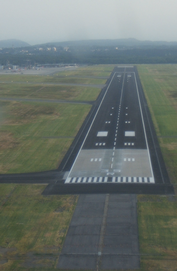

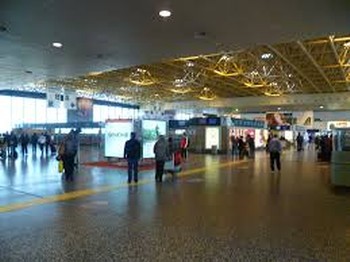
Pista utilizzata: 35 R



Home Page | Modellismo | Topolini | Altri Disney | Linus | Asterix | Diabolik | Giornalini di guerra | Western | Riviste | Romanzi | Mappa generale del sito
